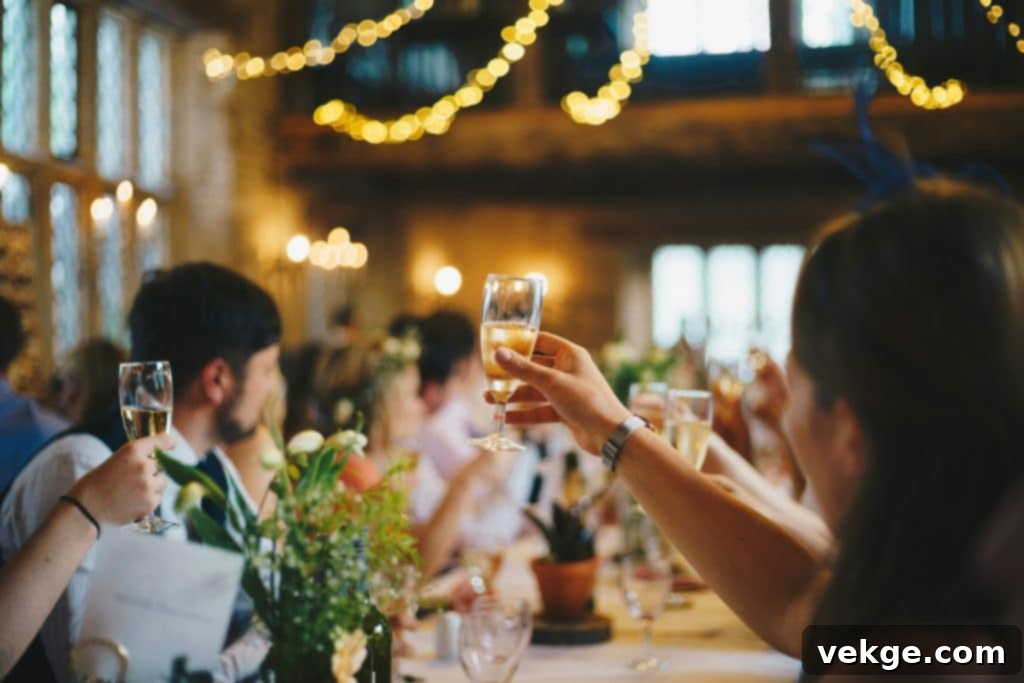Mastering Event Themes: Your Blueprint for Unforgettable Experiences
When it comes to event planning, the concept of creating a theme is often seen as an enjoyable, creative side task—a decorative layer applied to an already structured event. However, this perspective vastly undervalues the strategic power of a well-conceived event theme. In reality, a thoughtfully developed theme is one of the most potent tools at your disposal to elevate your event, ensuring it stands out, captivates your audience, and achieves its core objectives. The right theme doesn’t just add aesthetic appeal; it sets the entire mood, profoundly influences your attendees’ experience, and acts as a cohesive narrative that communicates your message with clarity and impact. Whether you’re orchestrating a high-stakes corporate conference, a heartwarming charity gala, or a vibrant personal celebration, your event’s theme is the underlying current that can either make or break the entire atmosphere and leave a lasting impression.
This comprehensive guide delves deep into the art and science of crafting an event theme that not only commands attention but also genuinely resonates with your target audience on a profound level. We’ll explore how to move beyond mere aesthetics, focusing instead on a strategic approach that prioritizes engagement, fosters connection, and culminates in an event that is truly memorable. A powerful theme transforms an ordinary gathering into an extraordinary experience, guiding every decision from décor to entertainment and leaving attendees with a vivid, positive memory long after the event concludes.
1. Define Your Event’s Core Purpose and Objectives

The foundational step in developing a truly resonant and effective event theme is to unequivocally understand your event’s core purpose and desired outcomes. Before you even begin to brainstorm creative ideas, ask yourself: Why are we hosting this event? What specific message do we aim to convey? What key actions or feelings do we want our attendees to take away? Are you aiming to foster meaningful business connections, celebrate a significant milestone, launch an innovative product, inspire creativity and collaboration, or perhaps raise awareness for a critical cause? These fundamental questions will serve as your guiding compass, ensuring that every thematic choice you make actively works towards achieving your overarching objectives.
For instance, imagine you are tasked with selecting event venues in NYC for an energetic product launch designed to showcase a cutting-edge technological innovation. In this scenario, your theme might naturally gravitate towards something sleek, modern, and forward-thinking, embodying innovation and excitement. Consider themes like “Future Forward,” “Digital Frontier,” or “Next-Gen Discovery.” Conversely, if your goal is to host a more relaxed, intimate networking event for industry peers, a theme that prioritizes professionalism yet exudes warmth and approachability would be more fitting. Think “Connect & Collaborate,” “Innovation Hub,” or “Global Perspectives.” Such themes encourage open dialogue, facilitate genuine connections, and align perfectly with an atmosphere of relaxed professional interaction. By first identifying your precise goals, you can confidently ensure that your chosen theme functions as a powerful strategic asset, rather than merely a superficial decorative layer, thereby maximizing its potential to contribute to your event’s overall success.
2. Understand and Empathize with Your Audience
Once the purpose of your event is crystal clear, the next crucial step in crafting a successful theme involves deeply understanding the individuals who will be attending. An exceptional event theme speaks directly to its audience, making them feel not only included and valued but also inspired, entertained, and genuinely excited. Your audience should always remain at the very heart of every theme-related decision you make, as their engagement and experience are paramount.
To truly connect, ask yourself: What are the shared interests, values, and demographics of your guests? Are they a group of creative professionals who would appreciate an artistic, avant-garde, or trend-setting theme? Or are they a corporate audience, perhaps C-suite executives, who would prefer something more sophisticated, understated, and straightforward, emphasizing gravitas and professionalism? Delving into these aspects of your audience’s profile will enable you to tailor your theme in a way that authentically resonates with their specific tastes, needs, and collective personality. This thoughtful approach ensures the theme feels personal and relevant, rather than generic.
Consider this: if you’re organizing an event for young, tech-savvy professionals in a dynamic city like New York, a theme incorporating elements of cutting-edge technology, sleek minimalism, or even augmented reality might be incredibly engaging. Ideas like “Digital Playground,” “Metaverse Mixer,” or “Future of Tech” could be highly effective. On the other hand, if your event caters to a more traditional, perhaps philanthropic, demographic, a timeless and elegant theme would be far more appropriate. Options such as an opulent “Black-Tie Gala,” a “Vintage Hollywood Glamour” evening, or a “Regal Garden Party” theme would convey the desired sense of sophistication and grace. By aligning your theme with your audience’s expectations and preferences, you create an immediate sense of connection and belonging, enhancing their overall experience significantly.
3. Align Your Theme with the Event Type and Formality
Different types of events inherently come with distinct expectations regarding atmosphere, formality, and engagement. Your chosen theme must gracefully reflect these inherent characteristics to avoid any sense of dissonance or incongruity. Imagine the awkwardness of a casual beach party theme attempting to fit within the serious context of a corporate conference, or a gritty, industrial urban look being imposed on a romantic wedding celebration. Such mismatches can easily detract from the event’s intended purpose and leave guests feeling disoriented or uncomfortable. The specific type of event you are hosting is a powerful determinant in deciding what thematic elements will work best and what might come across as ill-suited or out of place.
For example, if you are planning a formal fundraising gala at one of the more upscale and historic event venues in NYC, your theme should naturally lean towards classic elegance and sophistication. Themes such as “Old Hollywood Glamour,” “Emerald City Gala,” “Midnight in Paris,” or an “Enchanted Forest Soiree” would perfectly complement the grand setting and the expected dress code. These themes allow for luxurious décor, refined catering, and a sophisticated entertainment program. Conversely, if you are organizing a fun, laid-back outdoor event—perhaps a summer BBQ, a music festival, or a community fair—your theme should embrace a more rustic, playful, or bohemian tone. Think “Boho Chic Festival,” “Rustic Harvest,” “Summer Carnival,” or “Tropical Paradise.” These themes encourage casual attire, interactive games, vibrant food stations, and an overall relaxed vibe. Ensuring your theme is seamlessly aligned with the event’s type not only makes guests feel comfortable and appropriately dressed but also ensures that every element, from decorations and food choices to activities and entertainment, fits naturally and cohesively within the overall envisioned atmosphere, making the entire experience feel harmonious and authentic.
4. Harmonize Your Theme with the Chosen Venue
The physical space where your event takes place—the venue itself—is far more than just a backdrop; it should be an integral partner in shaping your theme. The venue’s inherent architecture, its unique layout, existing décor, and natural features can all contribute significantly to crafting a truly immersive and memorable experience for your guests. The goal isn’t just to choose any venue; it’s about meticulously finding a space that beautifully complements and enhances your chosen theme, making the two inseparable.
Consider this: if you select a modern, sleek, and minimalist venue nestled in the vibrant heart of NYC, your theme would ideally echo these contemporary aesthetics. A futuristic, high-tech, or industrial-chic theme—perhaps “Urban Oasis,” “Digital Dreamscape,” or “Future Horizons”—would perfectly match the space’s clean lines, sharp edges, and sophisticated ambiance. Alternatively, if your venue boasts a more historic, grand, or even vintage atmosphere—such as an opulent ballroom, a restored industrial loft, or a charming old library—your theme could magnificently reflect this character by drawing from historical periods, vintage styles, or classic elegance. Themes like “Roaring Twenties Soiree,” “Victorian Steampunk,” or “Gatsby Glamour” would feel perfectly at home, leveraging the venue’s existing charm.
On the other hand, an outdoor venue, particularly one with a breathtaking natural setting like a botanical garden, a beachfront, or a scenic vineyard, lends itself beautifully to themes that embrace nature. A rustic, bohemian, garden party, or eco-friendly theme—”Enchanted Garden,” “Coastal Chic,” or “Vineyard Romance”—would utilize the environment to its fullest advantage, blurring the lines between the event and its surroundings. The more thoughtfully you integrate the venue into your theme, the more cohesive, authentic, and truly immersive the entire event experience will become for your guests. A successful theme doesn’t fight the venue; it embraces and elevates it, transforming the space into an active participant in your narrative.
5. Embrace Simplicity with Impactful Execution

While the allure of intricate details and elaborate decorations can be tempting, a truly successful and impactful theme doesn’t always necessitate overwhelming your guests with every conceivable design element. Often, the principle of “less is more” holds profound truth in event design. A carefully curated, simple yet profoundly impactful theme can exert a far stronger and more memorable effect than one that is overly busy, cluttered, or conceptually convoluted. The goal is clarity and resonance, not visual overload.
The key lies in meticulously focusing on a select few core elements that will make a powerful statement without visually or experientially overwhelming the space or the attendees. Think strategically about how you can forge a cohesive and immersive experience through judicious use of primary and accent colors, innovative lighting design, and subtle yet significant details such as custom table settings, bespoke floral arrangements, and elegantly designed signage. Instead of spreading your budget and creative energy too thin, concentrate on creating bold focal points in key areas. This could be a dramatic feature wall that embodies your theme, a striking centerpiece that captures immediate attention, or a series of carefully placed art installations. These strategic statements guide the eye and ensure that guests focus on the most important and evocative elements of your event’s narrative.
Whether it’s the consistent application of a signature color palette, the repetition of a unique graphic motif, or the grand unveiling of a theme-defining installation, subtlety and thoughtful restraint can often yield a far more profound and lasting impact than attempting to incorporate too many disparate ideas at once. A streamlined theme communicates its message clearly and elegantly, allowing its true essence to shine through every meticulously chosen detail.
6. Integrate Dynamic and Interactive Elements
One of the most powerful and effective ways to ensure your event theme truly resonates and creates a deep connection is by making it interactive and experiential. By allowing your guests to actively engage with the theme in a fun, hands-on, and participatory manner, you transform them from passive observers into active participants. This approach not only makes the event more memorable but also reinforces the theme’s message through direct experience.
Consider incorporating various interactive displays, strategically placed themed photo booths with props that align with your narrative, or engaging activities specifically designed to reflect the overall message and spirit of your event. For instance, if you’re hosting a networking event with a futuristic or tech-oriented theme, you could integrate an interactive icebreaker game focused on “predicting future trends” or a collaborative digital art installation. For a wedding with a nature-inspired theme, guests could participate in creating a “wishing tree” where they write down their heartfelt wishes for the couple on custom leaves, complementing the organic aesthetic. A corporate team-building event could feature escape rooms themed around problem-solving challenges relevant to your industry.
Other examples include live demonstrations related to the theme, workshops where guests learn a skill, augmented reality experiences that bring digital elements into the physical space, or even gamified scavenger hunts that lead attendees through different themed zones. When guests can physically, intellectually, or emotionally interact with your theme, it creates a much deeper, more personal connection to the event. This active participation allows them to not only understand the theme but also to take away something meaningful and tangible from the experience, whether it’s a new memory, a skill, or a personal connection.
7. Harness Technology to Amplify Your Theme
In today’s rapidly evolving digital landscape, technology stands as an incredibly powerful and versatile tool for breathing life into your event theme and taking it to unprecedented levels of engagement. Far beyond mere functional support, technology can transform your event into an immersive, dynamic, and truly unforgettable experience. Whether through the development of a custom event app, the deployment of interactive digital screens, seamless social media integrations, or even sophisticated themed virtual and augmented reality experiences, technology empowers you to elevate your theme and engage your audience in ways that were simply unimaginable just a few years ago.
Imagine using advanced projection mapping techniques to transform the blank walls and ceilings of your venue into a vibrant, continuously evolving, and utterly immersive experience that perfectly aligns with your theme. For a “Deep Sea Discovery” theme, the walls could ripple with ocean currents and schools of fish; for a “Cosmic Journey,” constellations and nebulae could swirl around guests. You could also set up a live social media feed prominently displayed on large screens, where guests are encouraged to post photos and comments using a specific event hashtag, instantly integrating their experiences into the collective narrative of the theme. Interactive kiosks could offer personalized content or gamified experiences, while custom lighting design and soundscapes can further envelop guests in the thematic atmosphere.
Leveraging technology to amplify your theme not only significantly boosts attendee engagement and interaction but also imbues your event with a cutting-edge, modern flair that is guaranteed to impress your guests and set your event apart. From holographic displays that bring characters to life to virtual reality tours that transport attendees to another world, the possibilities for technological integration are boundless, allowing you to create truly spectacular and deeply immersive thematic experiences.
Conclusion: The Art of Strategic Theming for Lasting Impact
Creating an event theme that genuinely resonates and achieves its objectives is far more than a superficial design choice; it is a meticulous blend of strategic planning, creative vision, and thoughtful execution. It transcends the simple act of selecting an attractive color palette or a collection of decorative items. Fundamentally, your event theme must be a deliberate extension of your event’s core goals, a direct and empathetic communication with your target audience, and a cohesive partnership with your chosen venue. When every aspect is carefully considered and flawlessly executed, your theme becomes the unifying force that transforms an ordinary gathering into an extraordinary, unforgettable occasion.
A well-crafted theme has the power to etch vivid memories into the minds of your guests, fostering an emotional connection that lingers long after the final curtain falls. It dictates the atmosphere, influences attendee behavior, and elevates the perceived value of the entire experience. Therefore, invest the necessary time in careful planning, embrace creative thinking, and allow your chosen theme to brilliantly shine through every single detail – from the initial invitations to the parting farewells. Whether you are orchestrating a formal corporate summit aimed at thought leadership, a vibrant and energetic community festival, or an intimate personal celebration, a strategically developed and beautifully executed theme is the ultimate stage-setter, guaranteeing a memorable and impactful experience for all who attend.
